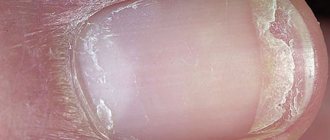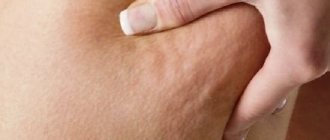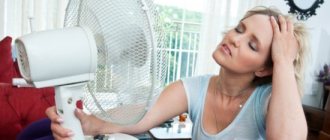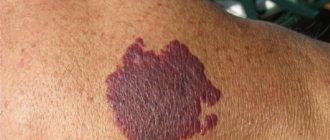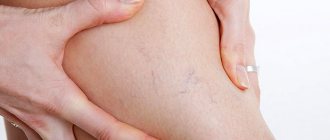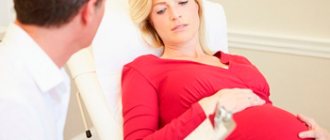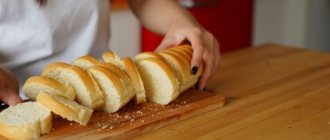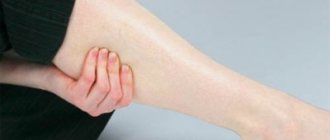Why does pain occur?
The causes of dysfunction of the venous system in the arms do not necessarily depend on specific vessels.
An adaptive reaction to frequent carrying of heavy weights and playing sports is increased blood flow to the muscles of the arms. Accordingly, an equally accelerated outflow is required. But the veins “work” much more slowly than the arteries, so some of the blood stagnates, causing the picture of vessels that “crawl out” out.
This traditional way of carrying weights does not cause early damage to the veins in the arms
Excessive tension of untrained muscles can be accompanied by rupture of veins. If a vein in the arm bursts, a burning sensation first appears, and then the bruise gradually increases (subcutaneous hematoma). In a person with good immunity and blood clotting, resorption will occur after a few days.
It has been noted that in trained people, tension is distributed along the entire vein, while in people who are not adapted to physical work, local “bumps” appear on the veins of the arms and large hematomas due to pronounced deformation of the vessels.
Another reason for an increase in the superficial venous pattern is loss of weight, fluid, asthenicity, and thinning of fatty tissue on the skin of the hands. This picture is typical for young women who want to lose weight. In their desire to achieve perfection, they forget about the advisability of maintaining the internal homeostasis of the body and end up with premature aging of the skin.
Possible reasons
Experts identify many reasons and factors that provoke swelling of the veins and pain in the area of their localization.
The following diseases can cause this symptom:
- Varicose veins of the hands
- Atherosclerosis
- Problems with vein valves
- Phlebitis (periphlebitis, endophlebitis, panphlebitis)
- Venous insufficiency
- Aneurysm
The structure of the veins on the hands.
Age
Over the years, the skin loses its former elasticity. It is difficult not to notice that in older people the veins in the arms protrude more prominently. The reason for this physiological phenomenon is the absence of sebaceous glands and the thinning of tissues that occurs in humans with age.
The fatty layer of the skin hides the veins, but over the course of a person’s life it decreases, causing the veins to protrude outward. This type of varicose veins is not dangerous, as it reflects the natural aging process of the body.
Heredity
Bloating veins are almost always inherited. If the mother’s veins began to “rise” early, then the daughter, most likely, due to her genetic disposition, will also soon encounter an unpleasant defect. This feature is especially pronounced in people of thin build.
Weather.
Even weather conditions can have an impact on a person's veins. In summer, blood circulation is much faster than in winter, so you may notice small protrusions of veins due to vasodilation in hot weather.
Varicose veins
The above reasons for varicose veins are not accompanied by pain. They do not pose a danger to the body, which cannot be said about varicose veins, which occur due to impaired blood circulation in the vessels. A blockage in any part of the veins is possible, which leads to the accumulation of venous blood, and as a result, to their swelling.
Most often, this pathology affects the lower extremities (legs), but varicose veins on the arms are also quite common. If there are a combination of signs of swelling and pain, you should immediately consult a doctor.
Physical exercise
Lifting weights, constantly carrying heavy bags, intense work in the garden - this and similar long-term physical activity affects the subcutaneous fat layer, and, accordingly, can contribute to bloating of the veins in the arms.
Thus, the most common causes of swollen veins do not cause the development of their disease. Therefore, in order to get rid of this kind of manifestation, it is not necessary to resort to radical measures.
Surgery is only relevant as a last resort, when the unpleasant appearance of the hands is accompanied by severe pain. That is, only if the cause is varicose veins, the doctor can prescribe removal of the bulge.
When a person experiences bulging veins in the arms, the reasons for this phenomenon can be different. The increase cannot be ignored, which means you need to consult a doctor as soon as possible.
During the examination of blood vessels and a medical examination, the factors for the onset of the disease will be determined. Let's consider what could be the cause of swollen veins and how they can be treated with traditional methods and therapy.
The manifestation of vascular deformation can be associated with both external and internal factors. The most common diagnosis is varicose veins.
Most often, swollen veins in the arms appear as a result of exposure to provoking physiological factors. However, there are cases when dilated venous vessels may indicate serious vascular pathologies.
Symptoms in women and men
The initial stages of varicose veins usually occur with minor symptoms. Patients may be bothered by swelling and a feeling of blood in the hands, especially when lowering the arms. With significant expansion, the veins appear above the surface of the skin. They are especially noticeable when the skin is thinning in thin people, in old age, and with connective tissue pathologies.
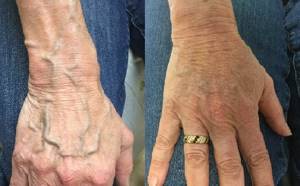
On the left are varicose veins, on the right is a hand without varicose veins
At the next stage, the contours of the venous vessels become tortuous and knotty, and heaviness, bloating, and pain appear in the area of the hands and forearms. The hands become numb and there is a tingling or burning sensation. The skin of the hands dries out, peels, there is itching, which intensifies in the evening, and darkening of the skin. There is rapid fatigue and lack of coordination in small finger movements (for example, it is difficult to sew with a needle).
Manifestations and diagnosis of bloating of veins
Additional diagnostic studies are carried out when there is reasonable suspicion of the development of vascular pathologies in which the veins in the arms stand out.
First of all, the patient is prescribed an ultrasound examination, which makes it possible to visualize superficial and deep vessels, blood clots and other problems that cause blood flow disturbances.
Venography may also be done. Its essence lies in the introduction of a contrast agent into a vein and subsequent X-ray examination.
What tests need to be taken?
If the patient has other dangerous signs indicating varicose veins, he should first consult a phlebologist. The doctor will examine the patient (palpation) and, if necessary, prescribe additional research methods.
Laboratory tests are considered mandatory. The following methods are used to diagnose vascular diseases:
- Blood test (general).
- Urine examination.
- Biochemical blood test (to determine cholesterol and other parameters).
- Blood test for clotting.
These tests will help evaluate the properties of the blood and diagnose possible vascular diseases.
Necessary examinations
You can diagnose possible diseases that provoked swelling of the veins in the arms and pain in them using additional diagnostic methods. These include:
- Segmental Dopplerography.
- Magnetic resonance imaging of veins.
- Computed tomographic phlebography.
- Ultrasound diagnostics of vessels of the upper extremities.
Diagnosis of the condition
To study the venous network of the upper extremities, as a rule, ultrasound with Doppler sonography is sufficient. This method allows you to assess the diameter of blood vessels and the functioning of the valve apparatus of the veins, determine the degree of varicose changes and determine treatment tactics. If there is insufficient information, venography or MRI can be performed.
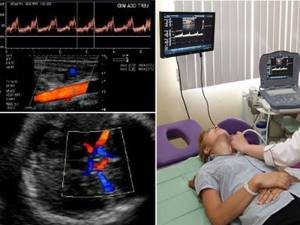
Ultrasound of the venous network of the upper extremities
Treatment
If prevention is powerless, you need to consult a phlebologist.
He will examine the patient, interview him, assess the condition of the blood vessels and prescribe treatment.
They usually start with drug treatment. Today there are a huge number of medications for varicose veins.
Treatment of the pathology primarily depends on the underlying disease that caused pain and hardening of the veins of the upper extremities. It must be carried out with an integrated approach.
Methods of modern therapy include:
- Treatment with medications.
- Surgical intervention.
- Physiotherapeutic procedures.
- Physiotherapy.
- Alternative therapies.
If the cause of swollen veins on the hands and forearms is varicose veins, then the initial stage of this disease can be treated at home with the help of medications and folk remedies. Improving the diet and including foods rich in flavonoids and vitamins in the menu is of great importance.
It is possible to stop and reduce the external manifestations of vascular pathology and improve the functioning of the veins. What to take for varicose veins:
- drugs that improve venous tone and microcirculation;
- anti-inflammatory drugs;
- anticoagulants;
- vitamins;
Tablets and ointments for the treatment of varicose veins contain substances that have a venotonic effect. First of all, these are troxerutin and other derivatives of rutin (glycoside of the flavonoid quercetin). In addition to them, flavonoids diosmin and hesperidin, extracts of horse chestnut and red grape leaves are used.
If the pathology is diagnosed in a timely manner, then in order to remove bulging veins, it will be enough to use drug therapy.
In this case, the following drugs may be prescribed:
- Non-steroidal anti-inflammatory drugs - Ketonal, Ibuprofen. Allows you to eliminate pain and stop the inflammatory process.
- Improving blood circulation - Vasoket, Actovegin, Trental. Minimize the likelihood of developing blood stagnation.
- Anticoagulants such as Aspirin. Helps thin the blood and reduce the risk of blood clots.
- Fibrinolytic enzymes – Fibrinolysin, Urokinase. Their action is aimed at thinning the blood.
- Antiplatelet – Dipyridamole.
- Local action - Dolgit, Troxevasin. Relieves pain syndrome.
Each drug has a different composition and mechanism of action. Therefore, only a doctor can prescribe medications based on the general condition of the patient.
ethnoscience
At an early stage of development of the inflammatory process affecting the veins in the arms, it is also possible to use folk remedies.
It is worth using one or more of the most effective recipes:
- Concentrated apple cider vinegar. Before use, it must be diluted with the same volume of tincture prepared from birch buds. This composition is used to lubricate hands in the morning and evening.
- Grate several heads of garlic, mix with butter in a 1:1 ratio. Apply the resulting mixture to a bandage and apply to the affected skin of your hands. Secure the bandage with adhesive tape. The course of treatment with this method lasts from three to five months.
- Mix crushed wormwood flowers and yogurt in equal quantities. The product is applied to the skin for about a third of an hour. Residues of the medicine are removed under running water. Next, you need to apply high-fat sour cream to your hands for a couple of minutes.
It is important to remember that, no matter how effective this or that method of therapy is, especially for unconventional methods, it can only be used after consultation with a specialist.
Exercises
Certain exercises can help get rid of protruding veins:
- straighten your fingers back, first one by one, then together;
- tilt your thumb forward and backward with a slight movement;
- spread your fingers out to the sides as much as possible,
- walk your fingers across the table.
Such exercises help improve blood flow and restore joint function.
Procedures
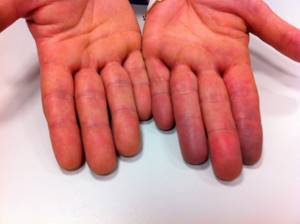
The following measures are helpful in treating bulging veins:
- Sclerotherapy. The impact on the affected area is carried out by introducing a special liquid that glues the vessel, which helps to completely stop blood circulation.
- Hirudotherapy - treatment with leeches. It will only take a few sessions to normalize blood flow and improve blood vessels.
- Ultrasound. Under the influence of waves, formed blood clots are destroyed.
- Laser therapy. It is one of the most painless and safe methods. The vessels are irradiated with a special laser and glued together.
Your doctor will tell you which method to choose.
Treatment of altered blood vessels is not limited to cosmetic procedures alone. It is necessary to adhere to the doctor’s recommendations regarding diet and diet.
Carrying weights and playing strength sports is prohibited. For shopping trips you will need to purchase a bag with wheels.
A balanced diet (not hunger strikes) and feasible exercise will help you lose excess weight. Among the foods you should avoid, fatty and fried meat foods, hot sauces and seasonings, smoked foods, and confectionery products. It is recommended to include in the menu: vegetables, fruits, poultry and fish, dairy products.
Several times a day you need to do exercises for your hands, fingers in a raised position, shake your hands, massage from your fingertips to your shoulder. If there is an inflamed area of skin above a vein or a bruise, massage of this area is contraindicated.
Contrast showers twice a day help maintain the necessary general vascular tone.
For pain and swelling, wearing a compression sleeve and special gloves helps. They are worn with the arm raised.Medicines should be taken only as prescribed by a doctor. Ointments based on Troxerutin, horse chestnut, Phlebodia tablets, and Detralex have a good effect.
Medicinal leeches (hirudotherapy) can be used if there is a tendency to thrombosis or inflammation of the vascular wall. This type of traditional therapy is not considered effective by all doctors. There are enough contraindications and questionable effects.
The cosmetic results from sclerotherapy treatment last for several years
Laser therapy is a modern and affordable method of treatment. It is used both for physiological cosmetic imperfections and in the case of inflammation and varicose veins.
The sclerotherapy method has become widespread in recent years. Allows you to quickly eliminate twisting venous cords and improve the appearance and rejuvenate your hands.
However, it should be remembered that it does not act on the cause of the disease. In this method, the result is achieved by stopping blood circulation through the vein by introducing sclerosant drugs inside, causing adhesion of the internal walls of the vessel.
For surgical removal of veins in the arms, serious indications are required. In the treatment of Parkes-Weber-Rubashov disease, ligation of anastomoses between arteries and veins is used. But this method is not very effective, since there are a lot of such anastomoses, it is impossible to bandage everything. If gangrene threatens, the arm must be amputated.
The prospects for treatment and the use of modern methods must be agreed upon with a phlebologist. Maintaining vascular tone in a normal state should be a prerequisite for general health, work activity, sports hobbies and housework.
How to treat varicose veins on the arms and palms?
Varicose veins on the hands are an unpleasant disease that worsens the appearance of the hands. Both men and women suffer from it.
But women are more often upset about it, since the disease spoils the appearance of their hands.
Having noticed bulging veins in themselves, patients wonder what they are and whether varicose veins occur on the arms.
It happens, but it is less common than varicose veins on the legs. The reason is that the load on the legs is higher than on the arms.
Symptoms
If you are wondering whether there may be varicose veins in your arms and suspect you have the disease, pay attention to the signs of the disease :
- On the hands . On the back of the hands, patients have bulging dark blue veins. Some veins are lumpy along their entire length up to the elbow. The appearance of the veins is embossed and ugly.
- on the palms , around which blueness is visible, and the appearance of the skin worsens.
- Varicose veins on the fingers are characterized by an increase in the size of the veins between the fingers. The swelling of the veins is also noticeable on the fingers themselves.
- Varicose veins on the hands with bumps are an advanced form of the disease in which the nodes on the veins become visible to the naked eye.
Stagnation of blood in the veins causes pain and discomfort. The upper limbs begin to respond to weather changes. There is numbness and cramps after sleep.
Patients complain of deterioration in hand motor skills: difficulties arise in performing work that requires finger dexterity. It becomes difficult for the sick person to hold things in his hands.
Causes
Provoking factors for varicose veins on the hands are:
- Disruption of the venous valves.
- Hard work with your hands.
- Extensive physical activity (sports training).
- Long-term use of OK (oral contraception).
- Hormonal imbalance during menopause.
- Genetic factors (predisposition if someone has been sick in the family).
- Overheating.
- Smoking and alcohol abuse.
- Obesity and metabolic disorders.
Treatment
Varicose veins on the hands are not dangerous to health . Surgeons rarely prescribe surgery. Pharmaceuticals, laser and ultrasound treatments are more often prescribed.
During the treatment of varicose veins on the hands, you should use fixing bandages or tight clothing and gloves. Do not overuse physical labor, so as not to cause swelling.
Treatment of varicose veins on the arm should not be postponed until later, so as not to trigger the disease and avoid inflammation and thrombosis.
Effective treatment for varicose veins on the hands includes:
- Compliance with medical recommendations (external and internal medications).
- Moderate physical activity.
- Cold and hot shower.
- Gymnastics for better blood circulation.
- A low-fat diet without preservatives and blood thickening products.
- Maintaining temperature conditions.
- Quitting alcohol and tobacco.
It is better to treat varicose veins of the hands in a comprehensive manner : warming up the hands improves the condition of the blood vessels, and ointments and gels help achieve a good cosmetic effect.
What to do if you have varicose veins?!
Read more >> |
Venotonic drugs are prescribed by a doctor.
Sometimes sclerotherapy is prescribed - a non-surgical procedure for treating vascular pathology. This is a fairly young technique.
The administration of the drug is painless and brings quick tangible results .
Pills
To improve vascular tone, increase blood circulation and reduce vascular fragility, tablets are used for varicose veins of the hands:
- Venarus, Aescusan, Phlebodia, Troxevasin, Venoturon.
- Blood thinners: Venolife, Lyoton, Trental, Warfarin.
- Heparin helps eliminate blood clots and reduce the likelihood of them forming.
- Painkillers: Diclofenac, Ketorol, Indomethacin.
Homeopathic remedies and vitamin complexes are taken along with the tablets (they should contain vitamins C and E). Microelements for maintaining health – silicon and zinc.
Creams and ointments
Ointments and creams for varicose veins help in the fight against the disease. They are used in complex therapy - tablets are combined with external treatment.
Application of ointments is simple - they spread well on the skin . One of the most inexpensive ointments is heparin. It helps improve blood circulation in the extremities, relieves swelling and has an analgesic effect.
- Gepatrombin and Lyoton penetrate into the deep layers of the skin and relieve pain, inflammation, and resolve blood clots.
- Troxerutin reduces the fragility of capillaries, relieves heaviness in the hands, improves the condition of blood vessels, compacting their walls. The gel is rubbed into the hands or compresses are made.
- Cream-wax “Zdorov” based on bee products is beginning to be used at the stage of varicose veins in the treatment of varicose veins of the legs. You can apply cream to your hands when the first symptoms appear. It contains natural ingredients: beeswax, horse chestnut extract, propolis, olive oil. It has anti-edematous and analgesic properties.
Similar drugs also help in the fight against the disease: Antistax, Varicobooster, Troxevasin, Menovasin, Vishnevsky ointment, ichthyol ointment, Horsepower gel, Sophia cream, Siberian Health balm, gel 911, turpentine ointment.
Traditional treatment
Traditional medicine knows several ways to combat varicose veins on the hands.
These include compresses with badger fat, treatment with leeches, rubbing with horse chestnut or Kalanchoe tincture, and baths with pine oil.
To relieve pain, drink decoctions of medicinal herbs: calendula, nettle, chamomile.
Along with traditional treatment, folk remedies are used : compresses from fern, tomato, willow branches, cabbage, honey. Rub with medical alcohol and apple cider vinegar.
- It is recommended to wear compression garments during the day and apply a warming bandage at night.
- Treatment of varicose veins of the hands at home should be agreed with a doctor.
Ointment recipe
Do-it-yourself ointment for varicose veins is made as follows:
- Take a tablespoon of rendered lard and mix in equal proportions with Vishnevsky ointment, honey, aloe and onion juice.
- Bring to a half-boil in a water bath.
- Immediately remove the homemade ointment from the heat and cool to 37 degrees.
- Warm ointment is applied under a compress and worn throughout the day.
You can use your own homemade ointment for varicose veins on your hands every day, and you need to store it in a closed jar in a cool place.
Source: https://provarikoz.com/vidy/na-rukax
Prevention of complications
Over time, the cosmetic defect worsens: not only are the veins in the arms clearly visible, but swelling and pain also occur. You should avoid physical exercises that increase blood flow to the veins in your arms, and do not wear clothes with tight sleeves or tight cuffs. It is also important to dose your stay in the bathhouse or sauna.
It is necessary to reduce the load on your hands - do not lift heavy bags or large household utensils. It is recommended to regularly knead your hands, lift them up and shake them slightly. Contrasting baths and showers tone the veins well. It is advisable to perform these simple procedures daily.
